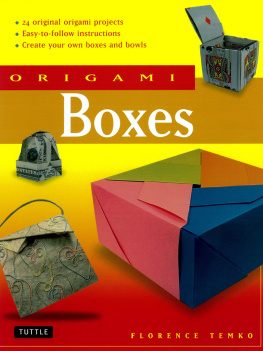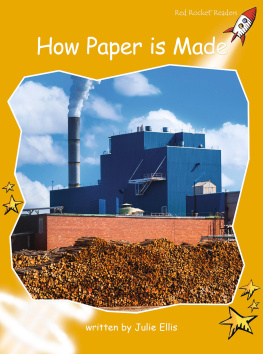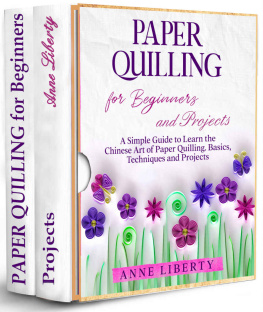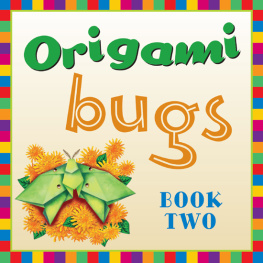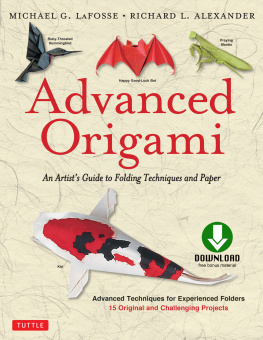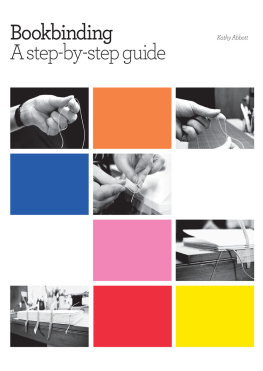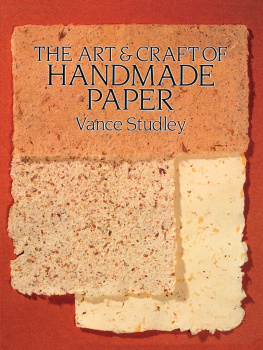Page List



First published in 2022 by
The Crowood Press Ltd
Ramsbury, Marlborough
Wiltshire SN8 2HR
www.crowood.com
This e-book first published in 2022
Lucy Baxandall 2022
All rights reserved. This e-book is copyright material and must not be copied, reproduced, transferred, distributed, leased, licensed or publicly performed or used in any way except as specifically permitted in writing by the publishers, as allowed under the terms and conditions under which it was purchased or as strictly permitted by applicable copyright law. Any unauthorised distribution or use of this text may be a direct infringement of the authors and publishers rights, and those responsible may be liable in law accordingly.
British Library Cataloguing-in-Publication Data
A catalogue record for this book is available from the British Library.
ISBN 978 1 78500 998 3
Cover design: Sergey Tsvetkov
Photograph: Sinad Kempley
Acknowledgements
To my teachers, my students and my family, with thanks
All photos are by Sinad Kempley unless specified otherwise.

INTRODUCTION
Why Make Your Own Paper? Accessibility, Sustainability and Joy
Paper is everywhere. We write and print on it, communicate with it, package other things in it, clean our homes and ourselves with it, celebrate and decorate with it. In spite of all the technological advances promising a paperless society, paper is flourishing, and is even enjoying a renaissance on the high street as supermarkets try to cut down on plastic food packaging. But our relationship with paper goes deeper than utility, as I discovered when I started making my own paper over twenty years ago.
There are probably as many reasons to make your own paper as there are people who make it. My starting point was making a little book, and despite living in a city with plenty of choice in the shops (internet shopping was still in its infancy), I could not find the papers I wanted. The content of the book was personal, and its surfaces needed to be personal too. I bought a simple kit, gathered some junk mail, some sweet wrappers and a brown paper bag, and fired up the blender on the kitchen table. Within an afternoon, I can honestly say I was hooked. I still keep samples of those first sheets on the studio wall.
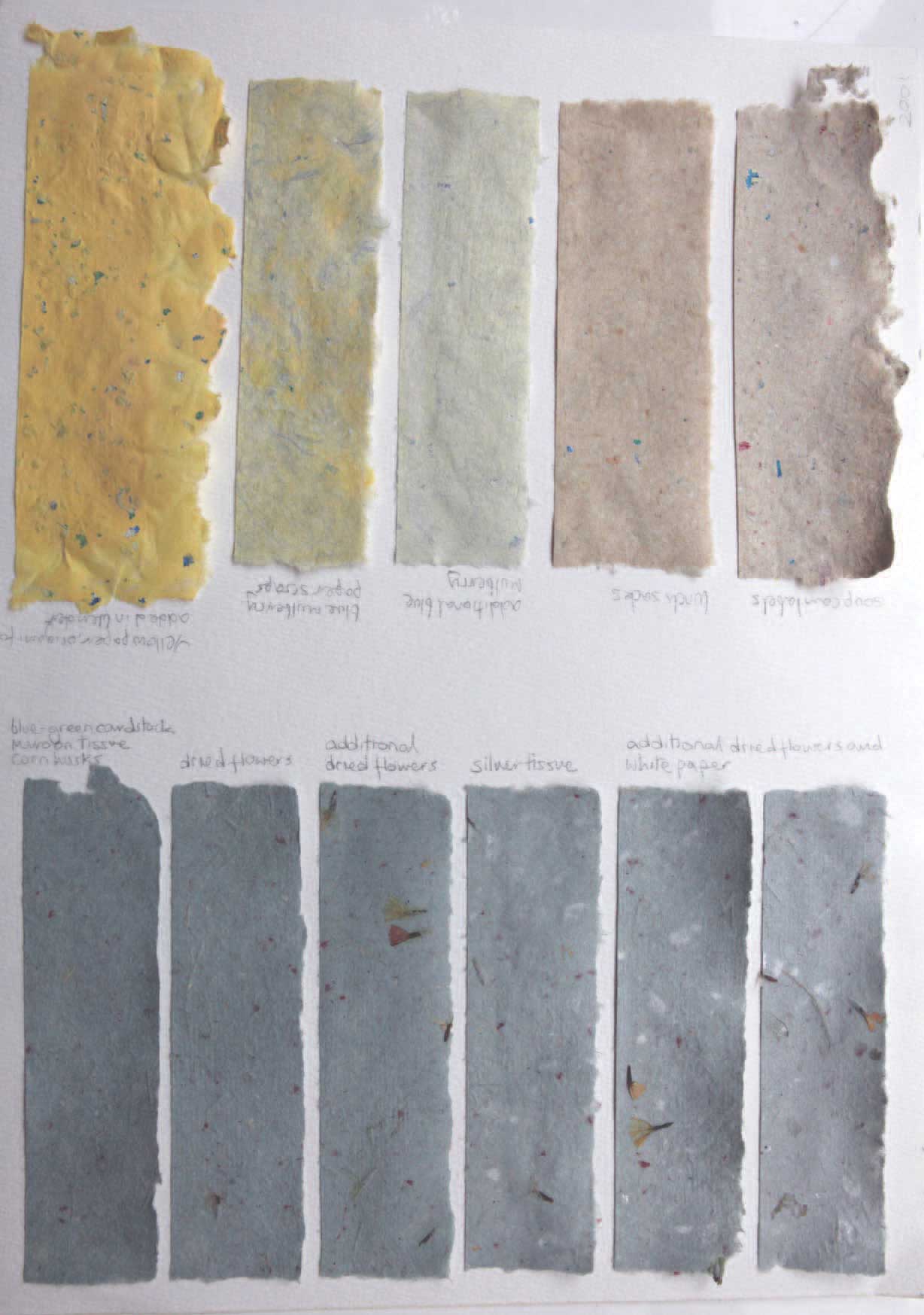
Sample sheet: the very first papers I made using a simple home set-up. Ingredients were added progressively to the vat every few sheets in order to observe the changes in colour and texture.
In a previous life, I designed, made and sold jewellery. I loved both process and product, but metalwork is messy, hot, and potentially hazardous with its naked flames and acids. After a move to a new country and a rented flat with no dedicated workspace, that chapter was sadly over. When I discovered papermaking, one of its biggest appeals was its accessibility.
You can make paper on a small scale almost anywhere: kitchen, dining room, bathroom or balcony. One of my London students gleefully reported cooking up cowpats for papermaking on her small high-rise balcony, but more of that in . The worst-case scenario probably involves starting your blender with the lid off by mistake and getting pulp on the ceiling and water on the floor. Clearing up when its time to use the kitchen for its original purpose again always seems to come too soon, but once you have your papermaking equipment organized, its the work of minutes to get started again. Its safe and enjoyable for all ages. Recycled materials are free. Basic equipment is inexpensive, usually easy to find and often multi-purpose.
There are few crafts where you can create an excellent finished product purely from discarded materials, while lightening the load on your recycling and compost bins. Practised with care, papermaking is wonderfully sustainable. You will need to use a certain amount of water and a bit of electricity, but water left over at the end of the process can be used for watering plants or even saved to make your next lot of paper.
Less of a practical consideration than accessibility and sustainability, but just as important, is the sheer joy of creating. Papermaking adds an extra layer of enjoyment; while the beauty and tactility of the paper itself is satisfying enough, you will also have the anticipation of the future projects you can use your paper for. We will explore some of the many possibilities in the last chapter.
This book is intended to help you discover a magical and transformative process. Once you get the papermaking bug, there is a whole world of further knowledge waiting out there to be tapped in books, periodicals, online groups and classes. Welcome to hand papermaking.
An Extremely Brief Timeline, from East to West
Thick volumes have been written about the long and fascinating history of paper (see Further Reading section at the end of this book) and that is not the purpose of this book. However, it is interesting to know, particularly if you choose to experiment with local plant fibres, just a little about the progression of papermaking from China in the first century CE via Japan and Korea and on through the Middle East. The Arabs brought paper to Europe via Spain, and from there it travelled to the New World. New discoveries are still being made about papers ancient origins.
The Industrial Revolution and the discovery of wood pulp as a cheap, raw material for mass production saw the quality of most paper take a dive, although there were, and still are, mills making high-quality rag paper for artists. Some European mills have histories stretching back centuries, and visitors can witness the traditional methods still being used. A list of these mills is included at the end of the book. The same is true in Japan, Nepal and many other countries, each showcasing their own fibres, traditions and working methods.
The Arts and Crafts movement helped to revive interest in hand papermaking in the West: American papermaker Dard Hunter led this endeavour, and the US currently leads the way in terms of education facilities and numbers of hand papermakers. There are also flourishing papermaking communities in Europe, the Middle East and Australia, often led by makers who use paper as an artistic medium for their own work, as well as making paper for other artists to use. Master papermakers in Japan, Korea, China and Vietnam continue their individual traditions from which all subsequent papermaking endeavours emerged.
How to Use This Book
This book is intended as an introduction to the craft of papermaking and is aimed squarely at the home or classroom papermaker. I have weighted the content towards basic equipment and processes with a firm grounding in proper sheet formation as all the more advanced and complex skills build on this one. The later chapters describe more creative techniques, but we are still just hinting at the infinite possibilities of the craft.




